
Feel free to add tags, names, dates or anything you are looking for
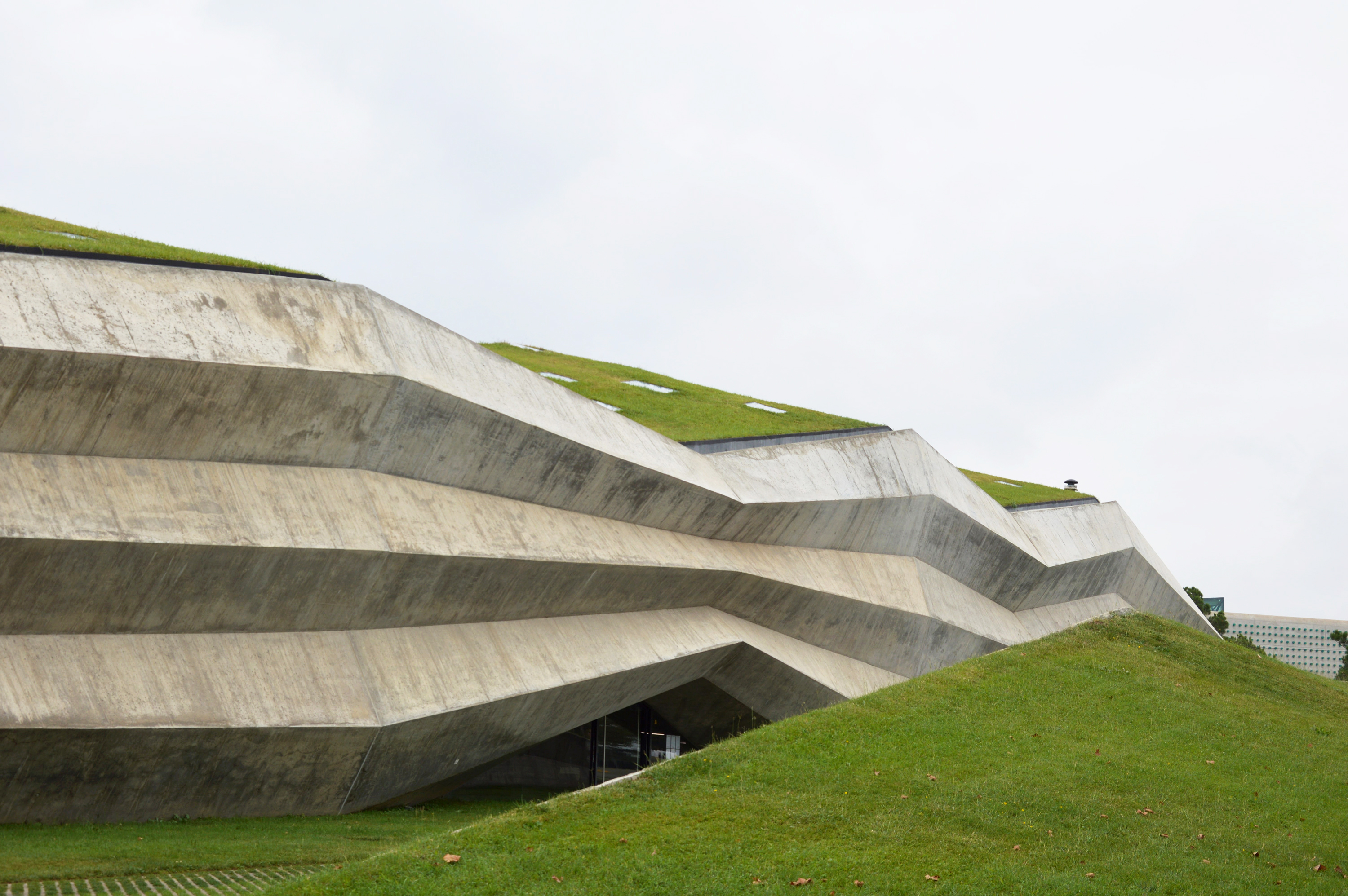

The first years of independence turned to be very tough for Georgia. The painful process of transformation from planned command system to market economy was accompanied by military conflicts and political chaos that caused deep social and economic crisis of the country in the early 1990s. These circumstances have negatively affected building activities. The Trinity Cathedral in Tbilisi (architect: Archil Mindiashvili) is the only large-scale project that was launched in that period. Its construction started in 1995 and, due to financial problems, was completed in 2004. The huge cross-domed church, erected on the Elia mount in Avlabari, has become one of the landmarks of Tbilisi and dominating the urban landscape of its historic districts.

General view of the left bank of the River Mtkvari
The architecture of residential houses has undergone significant changes since 1990s. Instead of standardized design typical of Soviet-era public mass housing, new houses have been built according to individual projects. They appeared not only in new neighbourhoods, but in an old part of the city as well and were often inappropriate to historically developed urban environment (Residential buildings at Janashia street and no 5 Tabukashvili street). This process is still on.
Construction has become more active throughout the country since the latter half of 2000s. Several important infrastructural projects are being implemented including TbilisiSenaki-Leselidze highway (since 2006), Tbilisi international airport (2007, architect Tayfur Ozugurlu), Zugdidi-Jvari-Mestia-Lastili highway (2010), tunnels in Gori and Rikoti passes (2011), Mestia airport (2020, architect: Jürgen Mayer), Sarpi customs terminal (2011, architect: Jürgen Mayer), Kutaisi international airport (2011-2019, architect: Ben van Berkel).
The big cities – Tbilisi, Batumi, and Kutaisi have been especially affected by construction activities. The majority of important buildings of that period are designed by famous foreign architects.
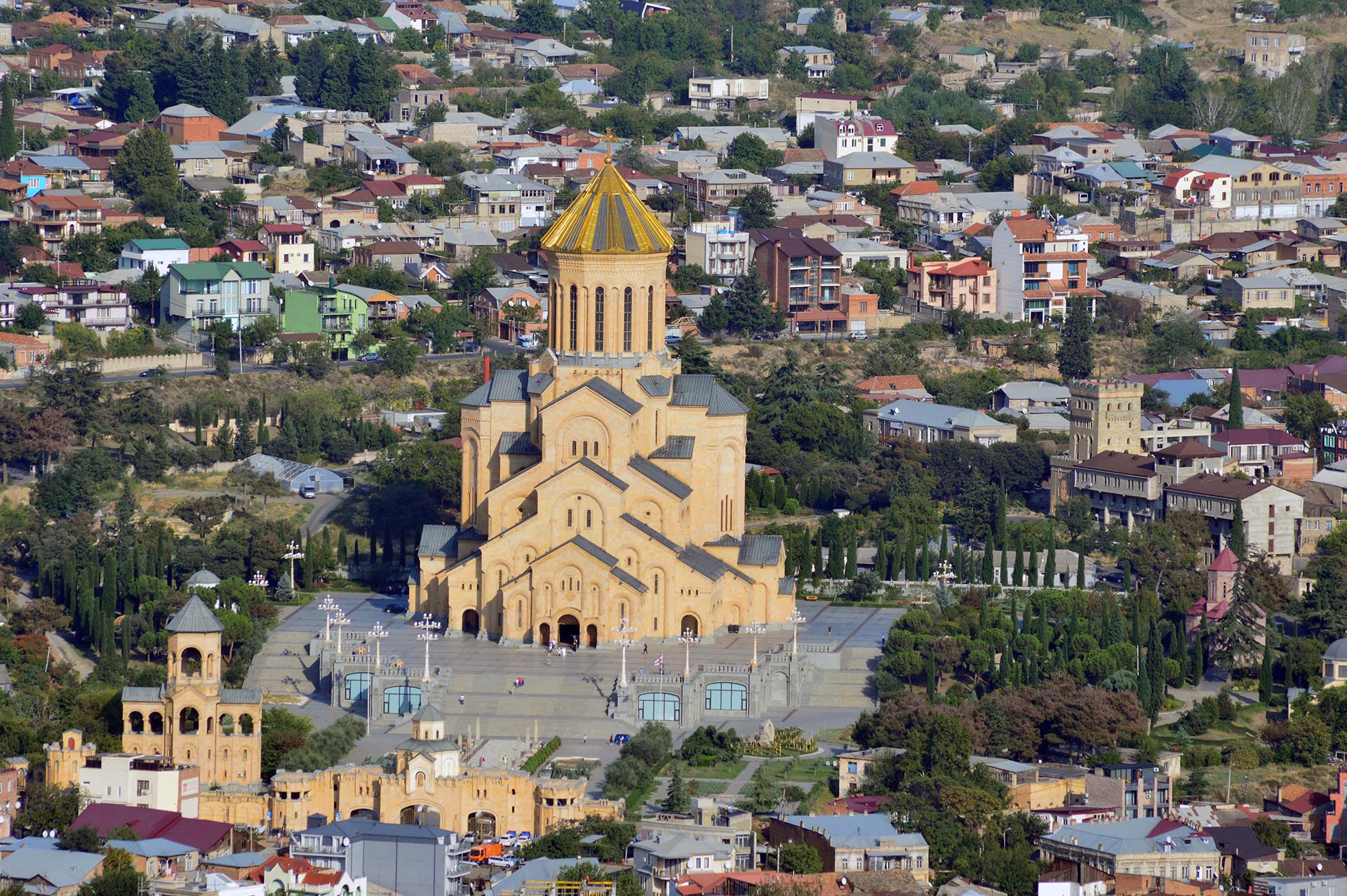
The Trinity
Church. Architect Archil
Mindiashvili
Italian designer and architect Michele De Lucchi has been most productive among western architects. According to his project, the Peace Bridge was built on the Mtkvari River in the historic part of Tbilisi in 2009-2010 - a lightweight glass and metal openwork pedestrian bridge with wavy upper contour. Police Unified Service Centre was completed in 2009. A fully glazed structure of dynamic shape built on the side of the road brought a new life to the gloomy Soviet suburb.
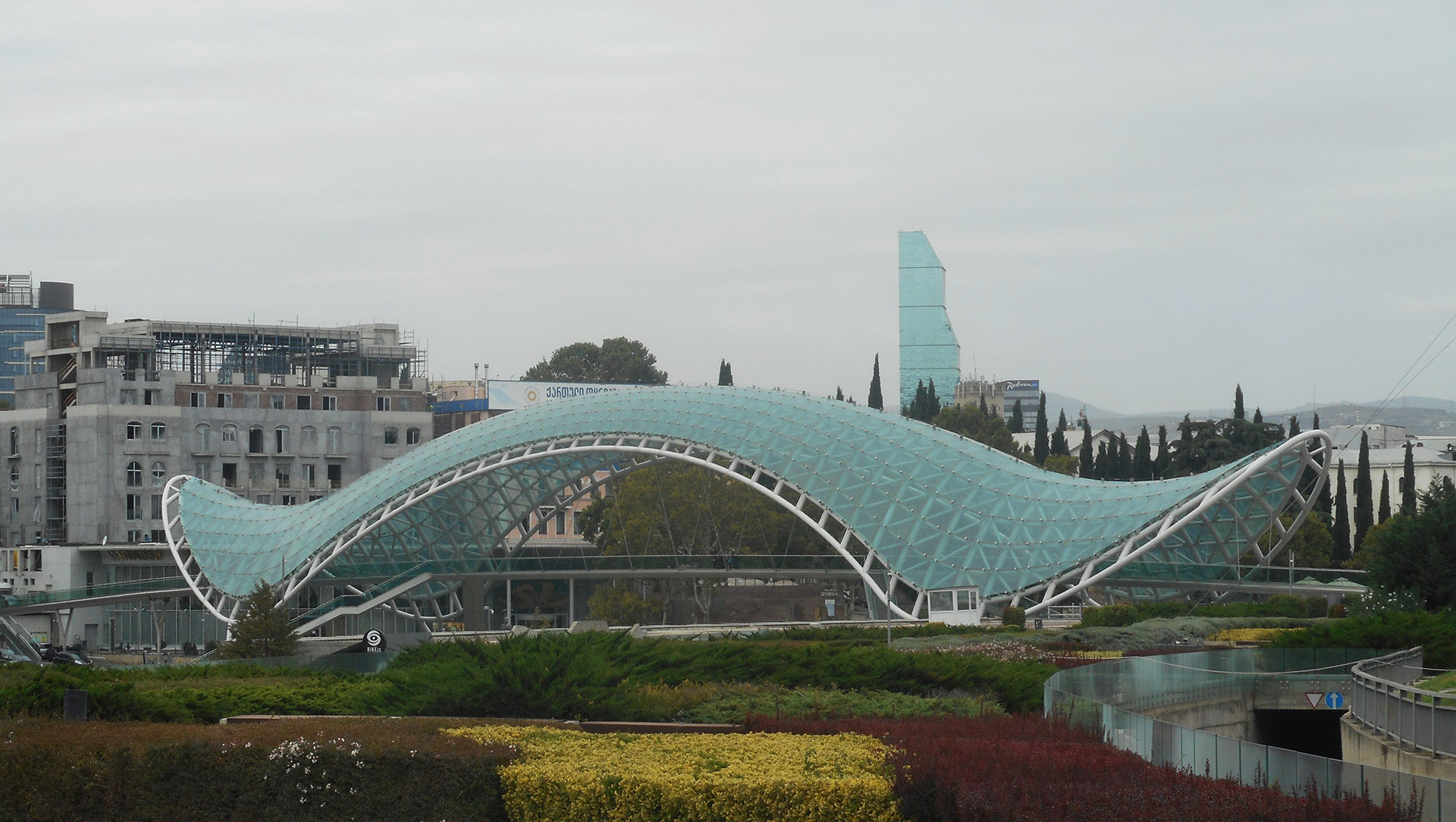
The Peace Bridge. Architect Michele De Lucchi

Police Unified Service Centre. Architect Michele De Lucchi
In Batumi, Michele De Lucchi have designed high buildings of the House of Justice and the Radisson Blu Hotel (2010-2011) which have introduced strong vertical accents in the seaside landscape.

Batumi Radisson Blu
Hotel. Architect Michele De
Lucchi
Between 2010 and 2014, the German architect Jürgen Mayer designed several structures in various parts of Georgia including the public service hall and regional department of the Ministry of Internal Affairs in Mestia, Wissol and Socar rest stops near Gori and Lochini, library and residential house in Tblisi. These zigzag profiled structures with wide window openings share the same architectural language.

The Public Service Hall in Mestia.
Architect Jürgen Mayer
The Italian architect Massimialiano Fuksas designed two buildings in Tbilisi, the House of Justice (2011-2012) and the new theatre (together with Doriana Fuksas, 2011-2016). The asymmetrical building of the House of Justice on the banks of the Mtkvari River is formed by overlapping volumes, which are covered with eleven structurally independent 'petals'.
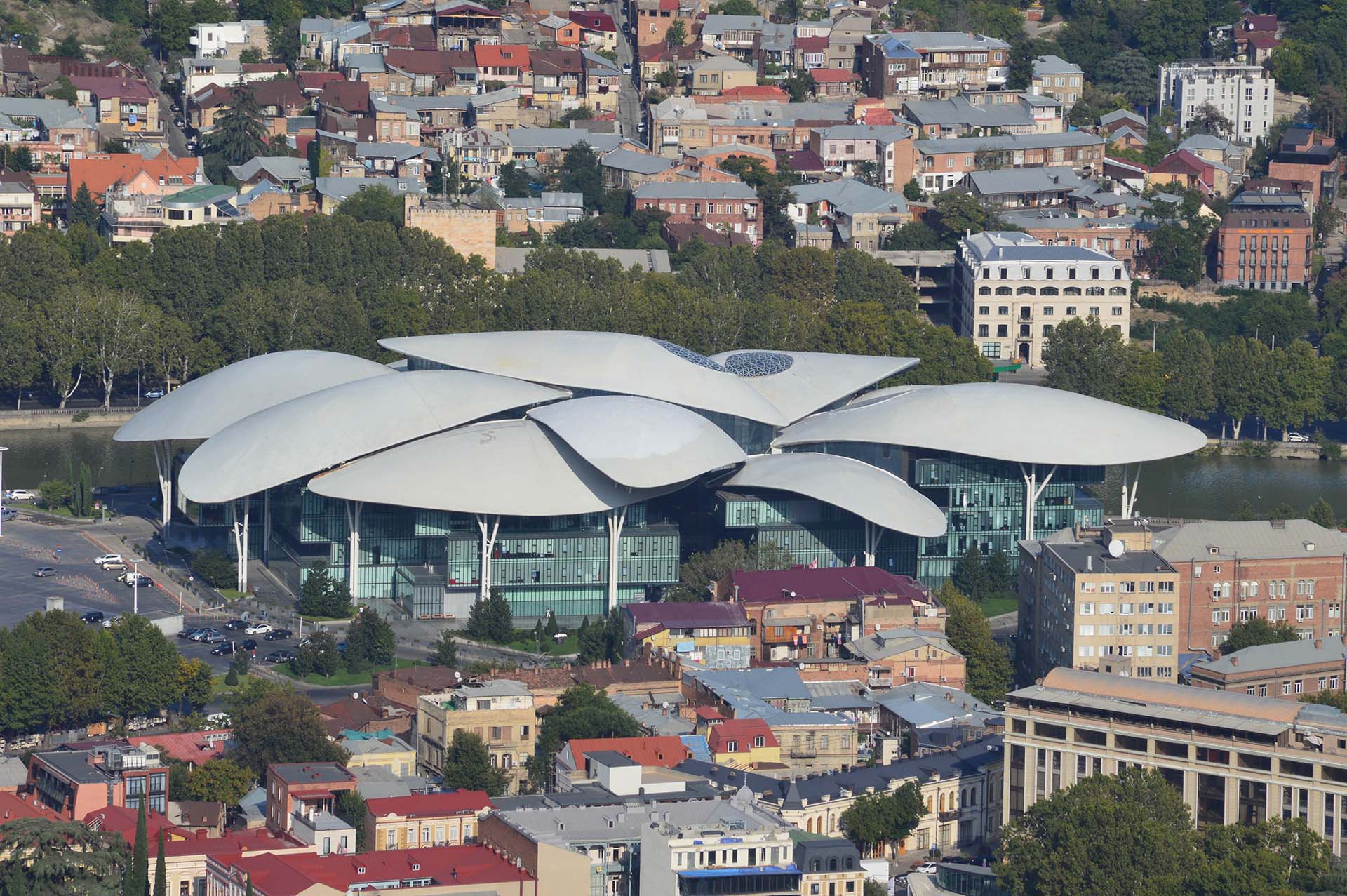
The House of Justice. Architect
Massimialiano Fuksas
The new theatre is located in Rike Park, in the recreation area. It consists of two interconnected tubular volumes, one of which, completely covered with silver metal plates, is a concert hall, while the other is partly glazed and is meant for exhibitions. The architecture of the building is reminiscent of organic nature forms and resembles a large conceptual sculpture.
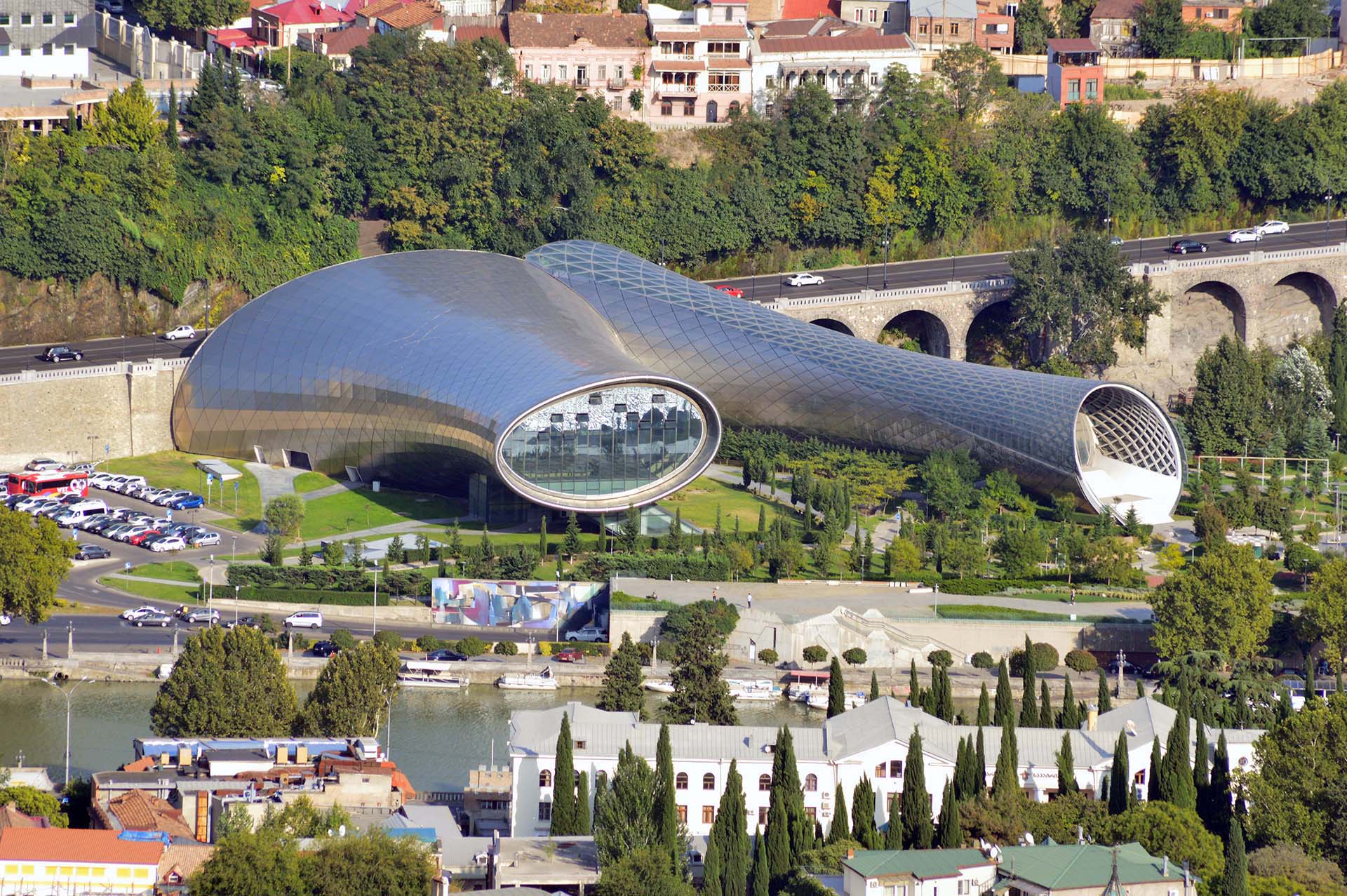
The House of Parliament was built in 2009-2012 in Kutaisi, designed by the Spanish architect Alberto Domingo Cabo. The transparent glass structure of a hemispherical shape set in an open area is a rare example of large-scale modern architecture in the city.
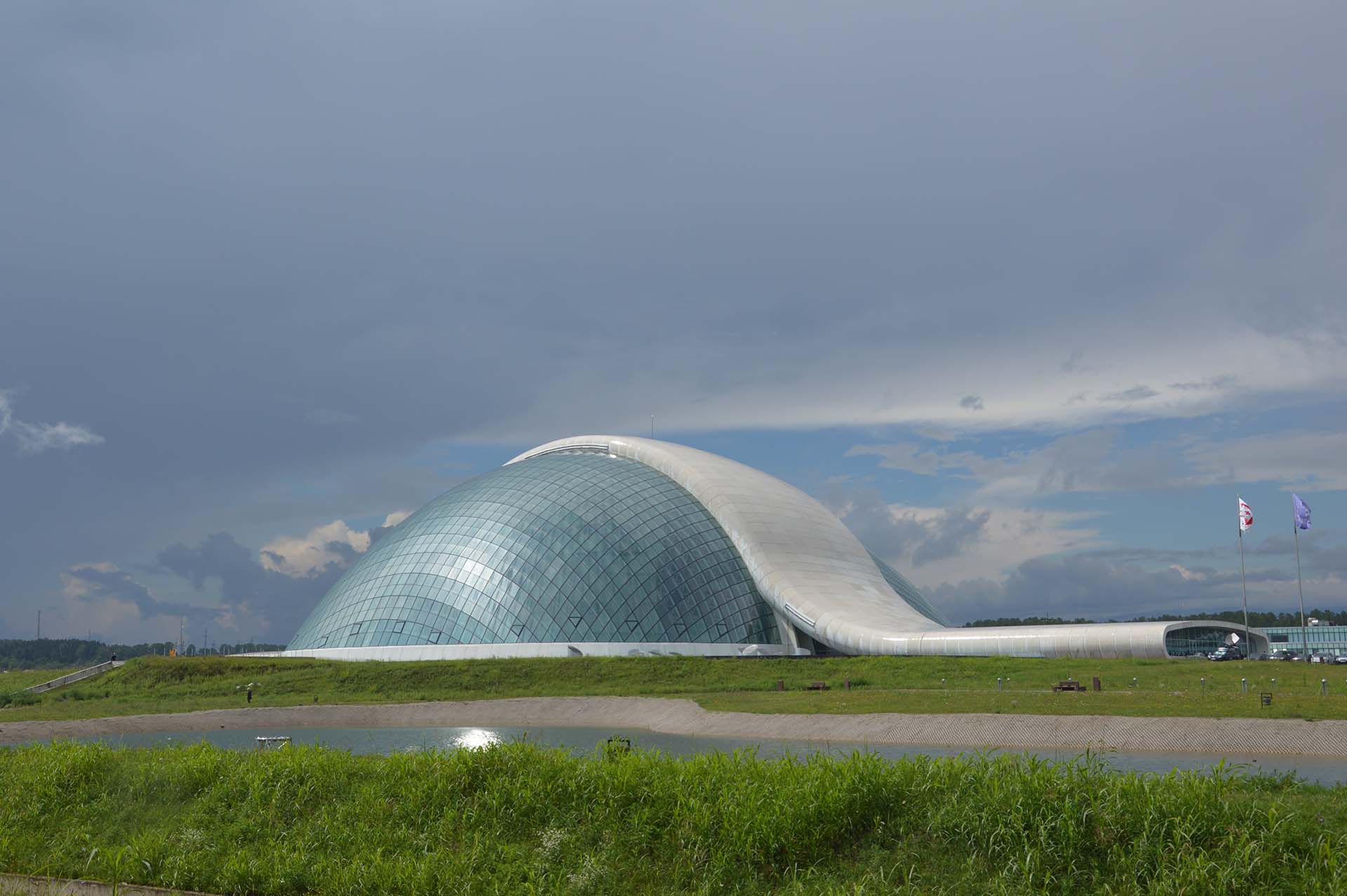
The House of Parliament.
Architect Alberto Domingo Cabo
Georgian architects have also greatly contributed to the development of architecture of independent Georgia. Among their works is the Cash Center of the National Bank of Georgia in Tbilisi (Architect Tengiz Kvantaliani, 2010-2012).

The Cash Center of the National Bank of Georgia. Architect Tengiz Kvantaliani
A minimalist building is composed of a glass core and a surrounding concrete volume. Other important examples of modern Georgian architecture include McDonald's building in Batumi (architect: Giorgi Khmaladze, 2013) and the coffee-producing company 'Meama' factory in Tbilisi (architect: Giorgi Khmaladze, 2019). The latter is a L-shape plan building with a sloping concrete façade contour. Owing to the low proportions and the green roof it naturally blends in with the surrounding landscape. The building has won three nominations of Architizer A+ Awards in 2020.
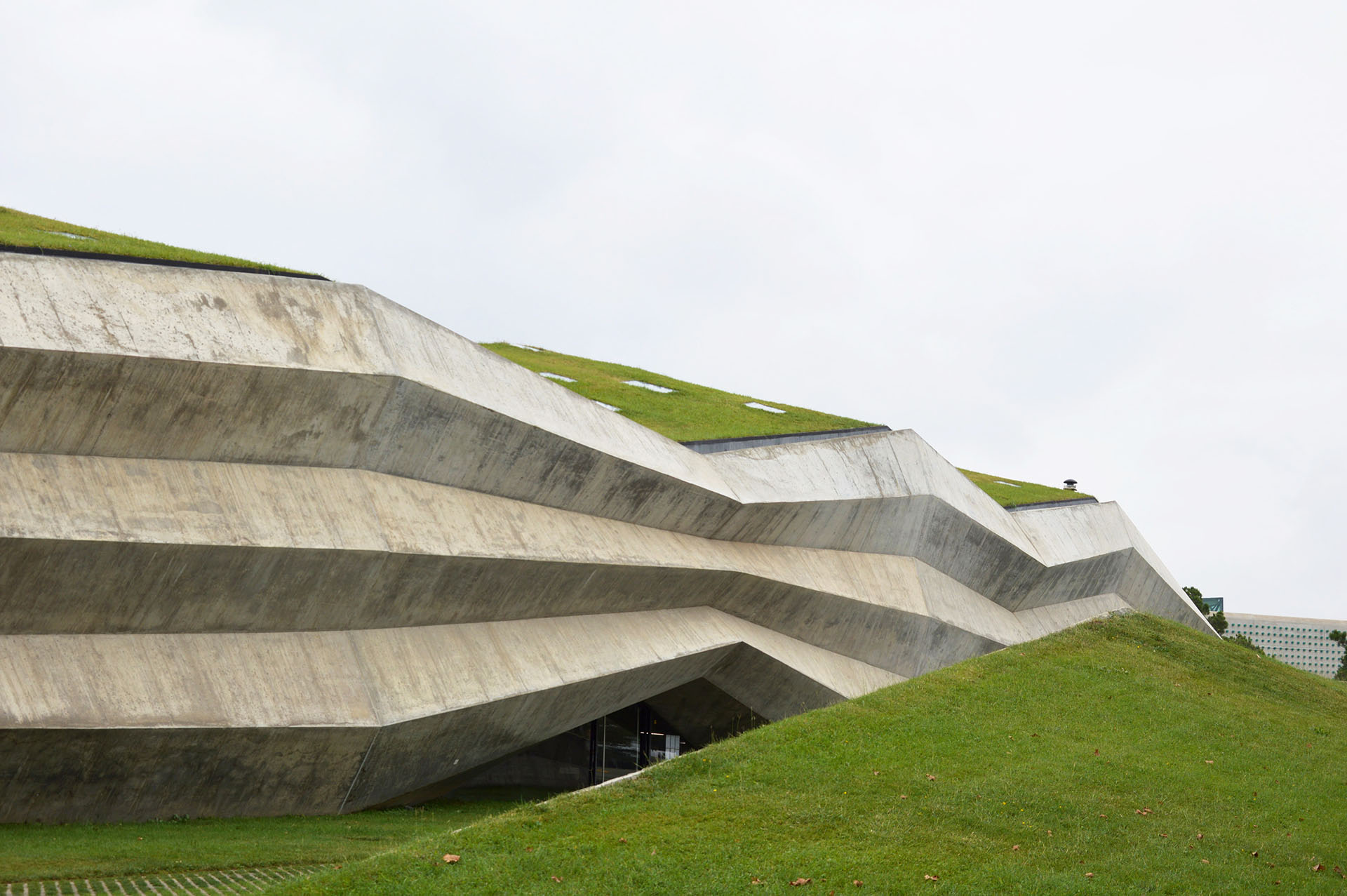
Meama factory building.
Architect Giorgi Khmaladze